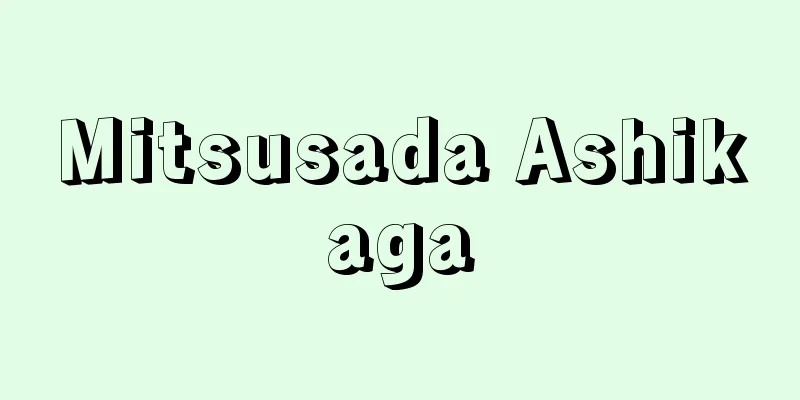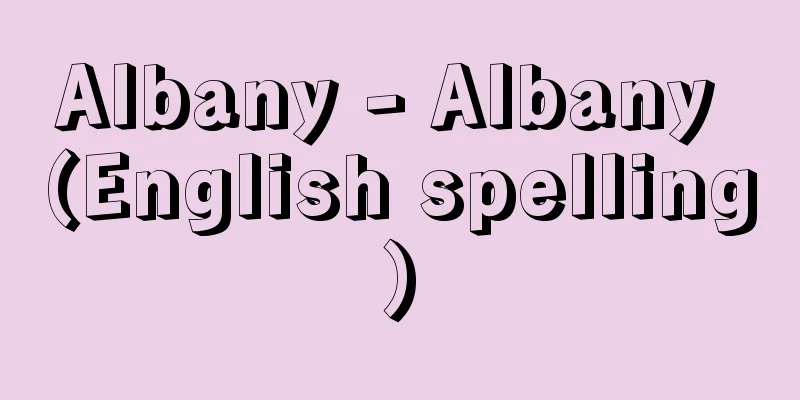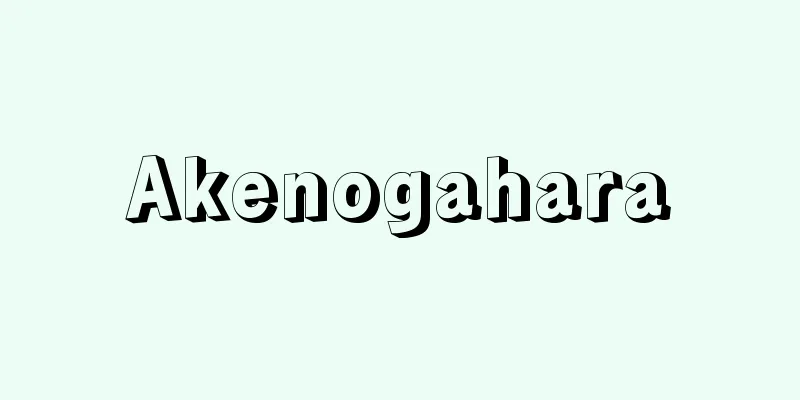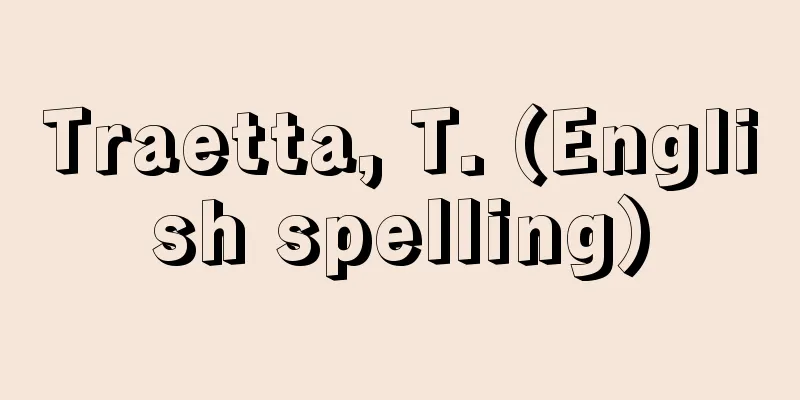Private School - Shiritsu Gakko

|
It refers to schools established by educational corporations stipulated in the Private School Act (Act No. 270 of 1949) enacted in 1949. However, for the time being, private schools for the blind, deaf, and disabled and kindergartens can be established by corporations or individuals other than educational corporations (Article 102 of the School Education Act). In contrast to national and public schools, it is a general term for private educational institutions, and has traditionally been called private schools in contrast to public schools. [Tsubura Kiyoji] The significance of private schoolsThe reasons for the establishment or existence of private schools can be summarized as follows. (1) A school that exists to realize special educational principles or beliefs. (2) Schools established for religious reasons. (3) Schools that serve complementary or alternative purposes to public schools. (4) Others (highly commercial). In any case, the purpose of private schools is to promote distinctive education that cannot be achieved by national or public schools, and in the Meiji period, private schools teaching law and politics and private schools related to religion were established. In other words, the prototypes of modern private schools include Fukuzawa Yukichi's Keio Gijuku, Niijima Jo's Doshisha English School, and Okuma Shigenobu's Tokyo Senmon Gakko (the predecessor to Waseda University), while in the Taisho period, private elementary schools such as Seijo Elementary School, Jiyu Gakuen, and Myojo Gakuen were established, which practiced their own new education. Today, of the four types mentioned above, the first type is rare, and the third type is the most common. And they are not merely supplementing or substituting for national or public schools, but are trying to show their own uniqueness. Also, in terms of school levels, there are very few private schools at the compulsory education level, especially at the elementary school level, and most are public. On the other hand, there are many private schools at the university and kindergarten levels, and most kindergartens are private depending on the prefecture or region. In contrast, in Western countries, there are many private schools even at the compulsory education stage. In other words, even at this stage, parents' right to choose education is widely recognized, preventing the standardization of education. This is because the intention is to provide a unique education amid religious and racial diversity, and at its root is an attitude of valuing individuality. [Tsubura Kiyoji] Private Schools ActToday, the establishment of schools is limited to educational corporations, not to the state or local public bodies, because schools are considered to be "of a public nature" (Article 6 of the Fundamental Law of Education). In other words, the establishment of private schools is intended to enhance the public nature of school education while at the same time respecting its autonomy. The Private School Law was enacted based on this spirit, and its features are as follows: (1) Guaranteeing autonomy in management and unique educational philosophy. To this end, the supervisory authority of the competent authorities (the Minister of Education, Culture, Sports, Science and Technology for universities and colleges of technology, and the prefectural governors for other schools) has been significantly limited, and the Council for University Chartering and School Corporations and the Council for Private Schools have been established to ensure that this authority is exercised democratically. (2) Ensuring the public nature of school corporations and the democratic nature of their operations. A certain number of directors and auditors are appointed as officers of a school corporation to prevent arbitrary decisions by the few, and at least one principal is added to reflect the will of the educational field. The monopoly of officers by members of a specific family is prohibited. Furthermore, a board of trustees is established, and the chairman of the board is obligated to hear its opinions on important matters. (3) Subsidies from national and public funds to private schools The Constitution makes it clear that everyone has the right to an education (Article 26), and the Fundamental Law of Education obligates the state to create conditions to guarantee education to all (Article 3). Based on this basic concept, the Private School Promotion and Subsidy Law (Law No. 61 of 1975) provides subsidies from national and public funds to private schools. [Tsubura Kiyoji] Current situation and issuesUnder the Private School Law described above, private schools were established after the Second World War, and then expanded rapidly, driven by the public's demand for education. Including junior colleges, about 80% of university education is provided by private institutions (as of May 2002, private institutions accounted for about 80% of the number of universities and about 82% of the number of students). However, there are many problems. There is a gap between private universities and national universities in terms of facilities, equipment, staff, etc. School building area and library collections per student are small, and many of the teachers are elderly or have multiple jobs. Meanwhile, the costs paid by students, such as entrance fees and tuition fees, remain high. This makes it difficult for private schools to demonstrate their true value of providing distinctive education based on their own educational philosophy. In order to improve these educational and research conditions, the following issues are considered to be the subject of discussion: (1) Establishment of a private school policy We must change our focus on national and public schools and clearly position private schools within the educational system. We must establish a private school policy that allows for unique, autonomous, and advanced education and research, or that enables the coexistence of education and management. (2) Efforts to reform within private schools Meanwhile, private schools must also continue to make further internal efforts to resolve problems such as student selection methods, management-based overemphasis, and high tuition fees, and open up their unique education to all citizens. Since 2003, most private universities have been moving toward refunding tuition fees, facility and equipment fees, and other prepayments if students decline admission. (3) Expansion and Strengthening of National and Public Subsidies As mentioned above, based on the perspective of the people's right to an education as defined by the Constitution and the Fundamental Law of Education and the state's responsibility to guarantee this right, subsidies for individual students will be expanded and strengthened in order to reduce the public's burden of tuition fees. The above is not an issue that only concerns universities. Senior high schools and kindergartens also face serious problems due to the spread of public senior high schools and the decline in the number of children and students. On the other hand, the education at famous private schools in large cities that places too much emphasis on going on to higher education needs to be reconsidered from the perspective of education that enriches humanity and fosters the ability to live. Furthermore, in today's world, with the trend toward integrated junior and senior high school education in public schools and the transformation of national universities into independent administrative institutions, it is hoped that cooperation between national, public and private schools will lead to the diversification and revitalization of education. [Tsubura Kiyoji] "Private Universities in Japan" by Masaru Osawa (1981, Aoki Shoten)" ▽ "Private School Law Lectures" by Motoyuki Ono, revised edition (1998, School Accounting Research Group)" ▽ "Private School Law Research Group supervised, 11th revised edition (2002, Daiichi Hoki Publishing)" ▽ "Management and Education of Private Universities" by Fumihiro Maruyama (2002, Toshindo)" [Reference items] | |Source: Shogakukan Encyclopedia Nipponica About Encyclopedia Nipponica Information | Legend |
|
1949年(昭和24)に制定された私立学校法(昭和24年法律第270号)の定める学校法人が設置する学校をいう。ただし、私立の盲・聾(ろう)・養護学校および幼稚園については、当分の間、学校法人以外の法人または個人も設置することができる(学校教育法102条)。国公立学校に対して、私設教育機関を総称するものであり、伝統的に、官学に対して私学ともいわれる。 [津布楽喜代治] 私立学校の意義私立学校の設置ないし存在の理由は次のように整理できる。 (1)教育上の特別な主義・主張を実現するための学校。 (2)宗教的理由から設立された学校。 (3)国公立学校の補完的、代行的な目的のための学校。 (4)その他(営利性の強いもの)。 いずれにしても、国公立学校のなしえない特色ある教育を進めることが私立学校の本旨であり、明治期には法律や政治を教える私立学校や宗教関係の私立学校が設立された。すなわち、近代私学の原型ともいえる福沢諭吉(ゆきち)の慶応義塾、新島襄(にいじまじょう)の同志社英学校、大隈重信(おおくましげのぶ)の東京専門学校(早稲田(わせだ)大学の前身)などであり、大正期には独自の新教育を実践する成城小学校、自由学園、明星(みょうじょう)学園などの私立小学校が設けられた。今日では前述の四つのタイプのうち、第一のものは少なく、第三がもっとも多い状況にある。そして、国公立学校の単なる補完・代行にとどまらず、それぞれの独自性を出そうとしている。また、学校段階でみると、義務教育とりわけ小学校段階では私立はきわめて少なく、ほとんどが公立である。一方、大学および幼稚園段階では私立学校が多く、幼稚園については県ないし地域によってはほとんどが私立である。これに対して、欧米諸国では義務教育段階でも私立学校が多くみられる。つまり、この段階でも親の教育選択権が広く認められ、教育の画一化を防いでいる。それは、宗教的・人種的多様性のなかで独自の教育を施そうと意図することであり、その根底には、個性を重んずる姿勢が存在している。 [津布楽喜代治] 私立学校法今日、学校の設置が、国および地方公共団体以外は学校法人のみに限られているのは、学校が「公の性質をもつもの」(教育基本法6条)とされるからである。いいかえれば、学校教育の公共性を高め、同時にその自主性を尊重することを目的として私立学校の設置が考えられているのである。私立学校法はこの精神に基づいて制定されているが、その特徴は次のようである。 (1)経営の自主性と教育理念の独自性の保障 このために、所轄庁(大学・高等専門学校は文部科学大臣、それ以外の学校は都道府県知事)の監督権限を大幅に限定するとともに、さらにその権限を民主的に執行させるべく大学設置・学校法人審議会、私立学校審議会を設けている。 (2)学校法人の公共性と運営の民主性の確保 学校法人の役員として、一定数以上の理事・監事を置いて少数専断を排するとともに、校長1人以上を加えて教育現場の意思を反映させ、また特定同族による役員独占を禁じ、さらに評議員会を設けて、重要事項についてはその意見を聞くことを理事長に義務づけている。 (3)私立学校に対する国公費の助成 憲法はすべての者が教育を受ける権利を有することを明確にし(26条)、教育基本法はこれを受けてすべての者の修学を保障する条件を整えることを国に義務づけている(3条)。このような基本的な考え方にたって、私立学校振興助成法(昭和50年法律第61号)により、私立学校に対する国公費の補助がなされる。 [津布楽喜代治] 現状と課題以上のような私立学校法のもとで、第二次世界大戦後の私立学校は設立され、その後国民の教育需要に促されて急速に拡大した。短期大学を含めると、大学教育の約80%は私立に依存している状況である(2002年5月現在、私立は大学数で約80%、学生数で約82%を占めている)。しかし、そこには多くの問題がある。施設、設備、スタッフなどの面で国立大学との間に格差がみられる。学生1人当りの校舎面積、図書館の蔵書数は少なく、教員は兼務者や高齢者が多い。一方、入学金、授業料など学生の納入する経費は依然として高額である。これでは、独自の教育理念に基づき特色ある教育を行うという私立学校の本質を発揮することはできにくい。 このような教育研究条件を改善するために、次のようなことが課題とされる。 (1)私立学校政策の確立 国公立学校中心の考えを改めて、学校教育体系のなかに私立学校を明確に位置づけ、独自性と自主性をもった高度の教育研究、あるいは教育と経営の両立を可能にする私立学校政策を確立することである。 (2)私立学校内部の改革努力 一方、私立学校側においても、入学者選抜方法、経営偏重、多額の納付金などの問題解決に向けていっそうの内部努力を続け、その独自性をもった教育をすべての国民に開放していくことである。なお、2003年度(平成15)からは大半の私立大学において、入学辞退した場合は前納金のうち授業料・施設設備費等は返還する方向にある。 (3)国公費助成の拡充・強化 前述のように、憲法・教育基本法の定める国民の教育権とこれを保障する国の責任という観点にたって、国民の学費負担を軽減すべく、学生個人に対する補助を拡大・強化することである。 以上のことは、ひとり大学のみの問題ではない。高等学校、幼稚園においても、公立高等学校の普及や幼児・生徒数の減少などの状況に当面して問題は深刻なものがある。一方、大都市部の私立有名校における進学偏重の教育については、生きる力をはぐくむ人間性豊かな教育の観点から検討される必要があろう。なお、公立学校における中高一貫教育、国立大学の独立行政法人化等が進行している今日、国公私立学校の連携協力による教育の多様化・活性化が期待される。 [津布楽喜代治] 『大沢勝著『日本の私立大学』(1981・青木書店)』▽『小野元之著『私立学校法講座』平成10年改訂版(1998・学校法人経理研究会)』▽『私学法令研究会監修『私学必携』第11次改訂版(2002・第一法規出版)』▽『丸山文裕著『私立大学の経営と教育』(2002・東信堂)』 [参照項目] | |出典 小学館 日本大百科全書(ニッポニカ)日本大百科全書(ニッポニカ)について 情報 | 凡例 |
>>: Silistra (English spelling)
Recommend
Kimotsuki clan - Kimotsuki uji
A powerful clan based in Kimotsuki County, Osumi P...
Cychrus morawitzi (English spelling)
...There are 700 to 800 species of ground beetles...
Litonia
A non-cold-tolerant bulbous plant of the lily fami...
Uterine rupture
What is the disease? Pregnant uterus Body ( Great...
Shadow Stepping Demon
…(4) Shadow Stepping Style: Stepping on the shado...
Orthoceratida
…the genus that represents the Orthoceradinida or...
Naoto Tajima
Athlete. Born in Iwakuni, Yamaguchi Prefecture. G...
Campinas (English spelling)
A city in the eastern part of the state of São Pau...
Zaglossus bruijni (English spelling) Zaglossusbruijni
…In addition to these characteristics, echidnas a...
Sun Guating - Sonkatei
A calligrapher and calligraphy critic of the Tang...
Interbank Market
…In the case of foreign currency denominated, the...
Bank Gulden - Ginkou Guruden
...It was the first public bank in Northern Europ...
Royal Air Force
...The lessons learned from World War I and the a...
Rokusaiichi - Rokusaiichi
A regular market that was held six times a month ...
Phonological opposition
…In response to this, L. Bloomfield expressed the...









